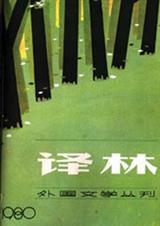30+mba-第71部分
按键盘上方向键 ← 或 → 可快速上下翻页,按键盘上的 Enter 键可回到本书目录页,按键盘上方向键 ↑ 可回到本页顶部!
————未阅读完?加入书签已便下次继续阅读!
example a certain minimum amount of water must flow。
Excel incorporates a Solver add…in feature to solve standard linear programming
problems。 It is not usually installed when Excel is first loaded so
to add this facility:
。 Select the menu option Tools | Add_Ins (you will need your original
installation disk)。
。 From the dialog box check Solver Add…In。
。 Access to the Solver option is now available from the new menu option
Tools | Solver
These websites provide more information on using linear programming in
operations:
。 Economics Network (economicsnetwork。ac。uk/cheer/ch9_3/ch9_
3p07。htm) provides a detailed explanation and Excel worked example。
。 IBM (www…128。ibm/developerworks/linux/library/l…glpk1) has a
worked example。
Queuing theory
Agner Krarup Erlang; a Danish engineer who worked for the Copenhagen
Telephone Exchange; had the problem of estimating how many circuits
were needed to provide an acceptable telephone service。 He found out by
empirical observation that the relationship between the number of circuits
and the number of telephone customers who could be provided with an
acceptable level of service was not as obvious as it at first seemed。 For example;
in his experiments where one circuit was provided on a network;
adding just one more could reduce waiting time by over 90 per cent; rather
than just halving it as simple logic might suggest。 He published the first
paper on queuing theory in 1909 and this new operation scheduling technique
was born。
Queuing theory can help answer operational questions such as these
for a service business such as a restaurant; bank or call centre: Given the
present resources:
240 The Thirty…Day MBA
。 How long will a customer have to wait before they are served?
。 How long will it take for the service to be pleted?
。 How big a waiting area will be needed for the queue?
。 What is the probability of a customer having to wait longer than a
given time interval before they are served – the classic service standard
problem calling for; say; ‘all telephone calls to be answered within 10
rings’?
。 What is the average number of people in the queue?
。 What is the probability that the queue will exceed a certain length? This
can cause congestion; say in a bank or supermarket。
。 What time period will the server be fully occupied for and how much
idle time are they likely to have; bearing in mind this is a cost to be
minimized?
The technique can be used for any operational problem where efficiency
is determined by calculating the optimal number of channels required
to meet a level of demand。 J E Beasley; formerly of the Tanaka Business
School (Imperial College) and currently Professor of Operational Research
at Brunel University; provides helpful notes on the subject at this web link
(h。。p://people。brunel。ac。uk/~mastjjb/jeb/or/queue。html)。
INVENTORY MANAGEMENT
High inventory levels are popular with marketing departments; as having
them makes satisfying customers an easier task; they are less popular with
production departments who have to carry inventory costs in their budgets。
Finance departments insist on having the lowest possible stock levels; as
high stock pushes working capital levels up and return on investment
down。 (Look back to Financial ratios in Chapter 1 on accounting to see how
this works。) This tussle between departments is a strategic issue that has to
be resolved by top management。 The birth of Waterstone’s; the bookshop
business founded by Tim Waterstone; fortuitously a marketing visionary;
qualified accountant and the pany’s managing director; provides an
interesting illustration of the dimension of the stock control issue。 Until the
advent of Waterstone’s the convention had been to store books spine out on
shelves; in alphabetical order; under major subject headings – puting;
Sport; Travel。 This had the added advantage of making it easy to see
what books needed reordering and stock counts were a simple process。
Waterstone; however; knew that ‘browsers’; the majority (60 per cent;
according to his research) of people who go into bookshops to look around;
had no idea what book they wanted; so didn’t know where to start looking。
His differentiating strategy was that as well as following the conventional
model of having books on shelves; he sca。。ered the books in piles around
Operations Management 241
the store using a variety of methods: new books in one pile; special offers
in another。 Sales and profits soared; sufficient to more than pensate for
the near doubling of book stock。
Inventory categories
There are three different categories of inventory that a business needs to
have and keep track of:
。 Finished goods: These are products ready to ship out to customers。
For Apple these would be puters; iPods and so forth; for General
Motors vehicles and for a baker loaves of bread。
。 Work in progress (WIP): These are products in the process of being
pleted。 They have used up some raw materials and had workers
paid to start the manufacturing process; so the cost will reflect those
inputs。 For General Motors WIP would include vehicles awaiting paint
or a pre…delivery inspection。
。 Raw materials: These are the basic materials from which the end product
is made。 For General Motors this would include metal and paint; but
it could also include a plete bought…in engine for the vehicles in
which they use third…party power units。
Economic order quantity (EOQ)
Businesses have to carry a certain minimum amount of stock to ensure
that the production pipeline works efficiently and likely demand is met。
So the costs associated with ordering large quantities infrequently and
so reducing the order cost but increasing the cost of holding stock has to
be balanced with placing frequent orders; so pushing the costs in placing
orders up; but reducing stock holding costs。 EOQ is basically an accounting
formula that calculates the point at which the bination of order costs
and inventory carrying costs are the least and so arriving at the most costeffective
quantity to order。
The formula for EOQ is:
Economic order quantity = (√ (2×R×O))
C
Where: R = Annual demand in units; O = Cost of placing and order; C= Cost
of carrying a unit of inventory for the year。
InventoryOps; a website created and run by Dave Piasecki to support
his book Inventory Accuracy: People; Processes; & Technology (2003; Ops
Publishing); provides a useful starting point in your quest for information
242 The Thirty…Day MBA
on all aspects of inventory management and warehouse operations。 At this
link (inventoryops/economic_order_quantity。htm); you will find
a full explanation of how to use EOQ。
QUALITY
As well as using efficient operation and control procedures an organization
has to deliver a quality product or service。 Quality in operations does
not carry quite the same meaning as it does in; say; marketing; where it
signifies something of a high standard。 In operations; quality means that
something meets a set of prescribed standards and performs as expected。
In other words; promises are made and kept。 But quality is also part of
the efficiency equation too。 Quality below standard can lead to high waste;
disrupted schedules and lost orders。 The ideas; concepts and techniques
that drive thinking on quality e from these management ideas。
Inspection
Frederick W Taylor (see above) in his book The Principles of Scientific Management
stated that one of the clearly defined tasks of management was
to ensure that no faulty product le。。 the factory or workshop。 This led to
a focus on the detection of problems in the product; testing every item to
ensure that it plied with product specifications。 The task was carried
out at the end of the production process using specially trained inspectors。
The ‘big idea’ emerging from this approach was defect prevention as the
means to ensure quality control。 Inspection still plays a part in modern
quality practices; but less as an answer and more as one tool in the toolkit。
Philosophy
W Edwards Deming (deming); an American statistician and
me



